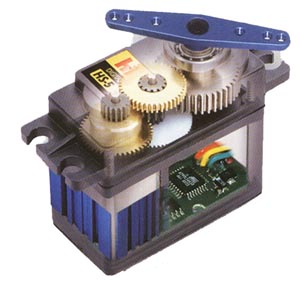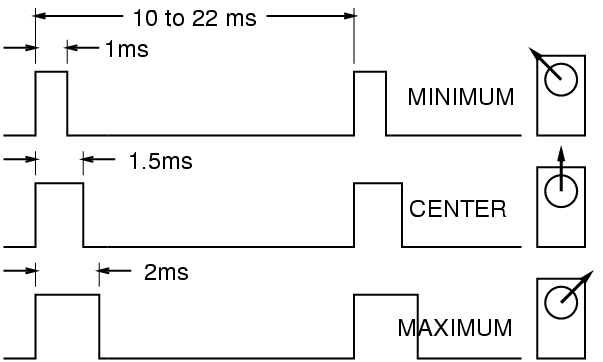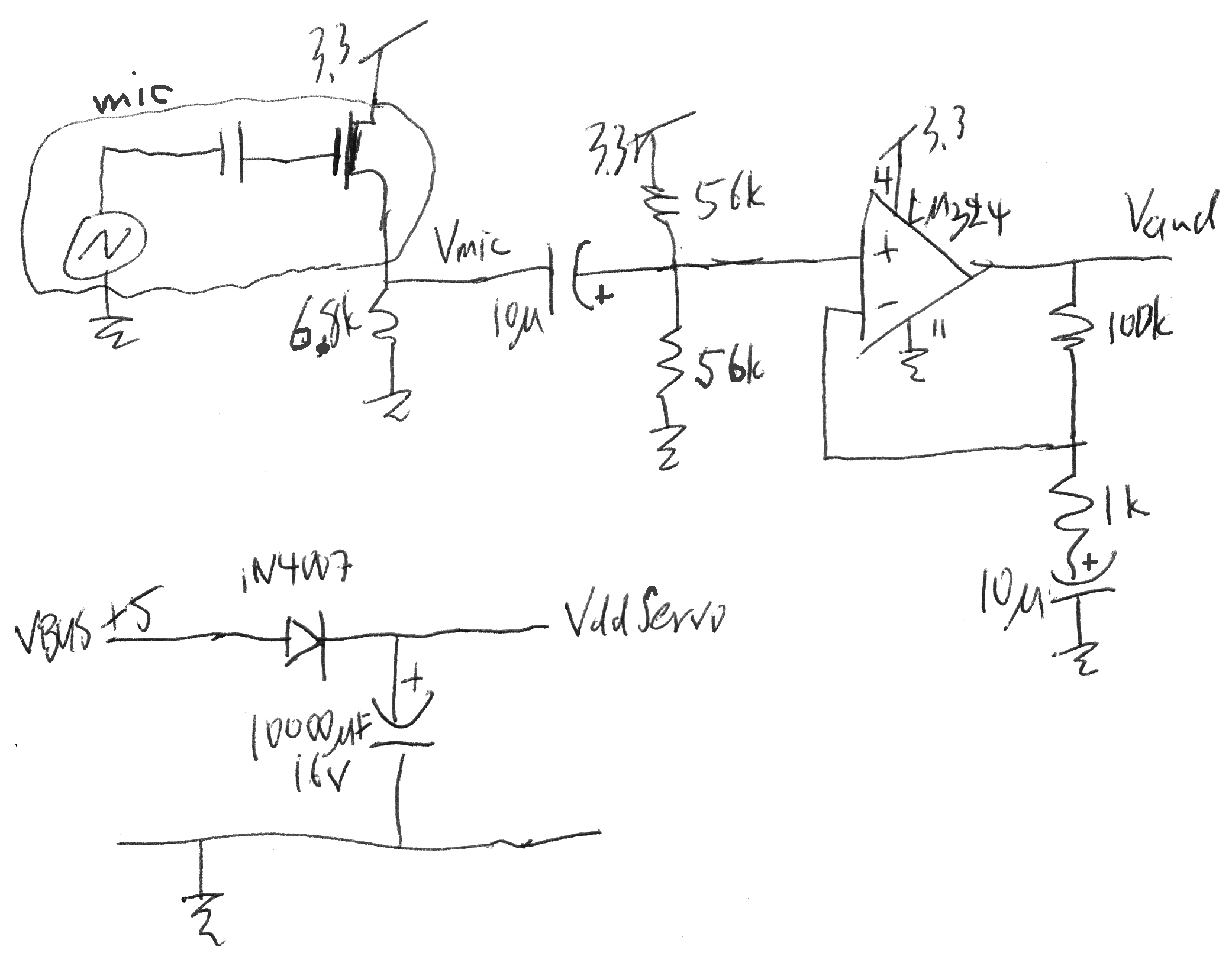Servo motors and controlling them with PWM
You will use in lab_3 an inexpensive hobby servo motor. Hobby servo motors come in wide varieties of cost, speed, torque, etc, from Futaba, Hi-Tec, Airtronics, and others. They are widely used in hobby radio control and therefore cheap and easily bought. They range from $15 for a basic analog servo to about $200 for the latest high speed, high torque, titanium geared digital servo with coreless motor.
They have one really great feature: the interface to control them is super simple, just the pulse width of a digital pulse sent to the motor at a rate from 50-200Hz. The pulse rate is not that important. The important thing is the pulse width. The range of the pulse width is from 1-2ms. 1.5ms is the middle servo position and 1 or 2 ms are the end positions.
You cannot control the torque, rate, or anything else; as soon as the servo's electronics detects the pulse width (which can require several pulses) it tries to get the servo to the new position as quickly as possible. You also cannot sense the servo's position, current or anything else; control is open-loop as far as the servo is concerned; all control is handled inside the servo.
The wiring of servo motors is also simple: 3 wires consisting of power, ground, and signal - see below. The input signal is a positive digital pulse of at least 2V. The power supply can range from 4V to 7V. Even higher voltages can be used but may burn out the servo if it stalls. The higher the voltage, the faster the servo. Let's use the 5V VBUS USB power here, which is available on the AVR32 board. If we overload VBUS, we will cause a fault on the USB host adapter. We also need to watch out for the large fluctuations in VBUS which can affect the ADC reference voltage.
To supply power to your servo from USB, use the lower left part of the schematic below to build a semi-isolated servo power supply. Do you see why it helps isolate the sensitive supply voltage for the ADC that converts the microphone signal?
The pencil balancer, robo goalie, and laser tracker are examples of using servos in conjunction with the event-based dynamic vision sensor silicon retina.




